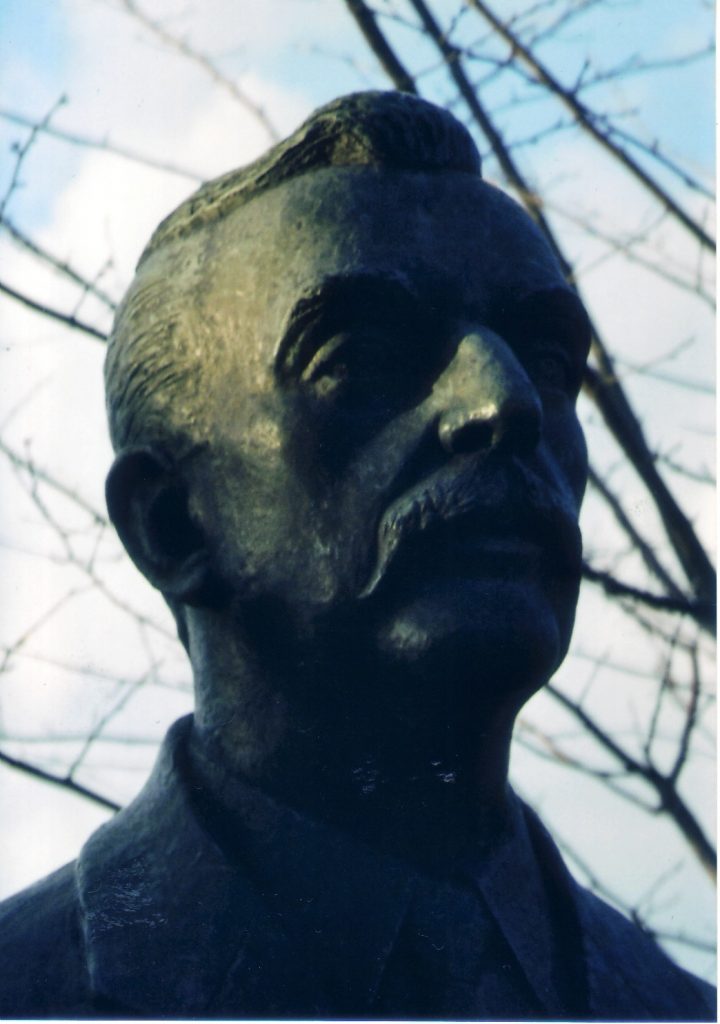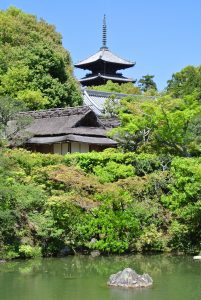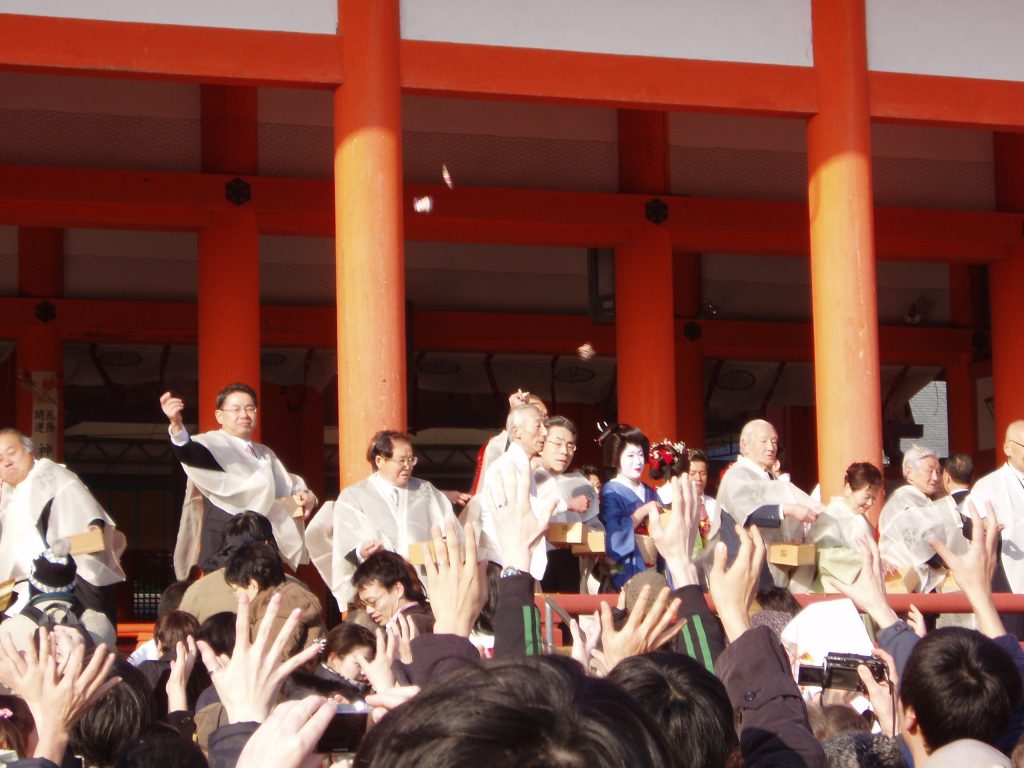
Lafcadio Hearn is famous for his association with Matsue, Kumamoto, Kobe and Tokyo. Not many people would associate him with Kyoto, yet he wrote a striking cameo entitled ‘Notes of a trip to Kyoto’ following a visit he made on October 23-25, 1895. It was included as a chapter in Gleanings in Buddhafields (1897), and has now been repackaged as a small Kindle production, available for ¥300 and retitled A Trip to Kyoto.
The occasion was the 1100th celebration of the city’s foundation, which had been postponed because of ‘plague’. By all accounts, it was one of the grandest celebrations to be held in the old capital, and Hearn certainly makes it sound special indeed.
It starts off with one of the author’s most important beliefs, namely the reintegration of cells in different form after death. This is prompted by sight of a young child doing fluent calligraphy of a sophistication even expert adults could not equal. In Hearn’s view, it is ‘beyond all question the work of ghosts – the countless ghosts who make the compound ancestral soul… Still, it was not the beauty of the thing itself which impressed me, but the weird extraordinary, indubitable proof it afforded of an inherited memory so vivid as to be almost equal to the recollection of former births.’
Hearn’s sightseeing in the old capital begins with Omuro Gosho, the garden of which unleashes a flood of Hearn superlatives. It is a ‘marvel’, ‘enchanted’, ‘exotic’, ‘unspeakably magnified,’ ‘a dream’, of ‘immense charm’, creates a ‘vibration of awe’, is of ‘vast antiquity’ with a ‘fresh sweet scent of verdure’. ‘Only to be a servant in such a garden were a privilege well worth paying for,’ concludes the enthusiast.
The capital is in festive mood for the big celebration and there are numberless shows in the streets. The Japanophile is irritated by the Western furnishings brought from the foreign community in Kobe, but also delighted to come across an edition of the Atlantic Monthly in a second-hand bookshop. One event to attract his attention is ‘a young man writing Buddhist texts and drawing horses with his feet, the extraordinary fact about the work being that the texts were written backwards – from the bottom of the column up.’ That alone should have made the trip worthwhile!

The pre-festival night sees the city filled with stalls and a flood of lanterns, the effect of which is ‘a phantasmagoria’ exemplifying the Japanese genius of creating the beautiful out of virtually nothing – paper, bamboo, ikebana, bonsai, etc. Hearn makes a strong case for aesthetics as a social good, because delightful objects and visual beauty are enjoyed by all, regardless of class and wealth. This contrasts with the ‘hideous machinery’ of industrialisation which makes ‘a hell of eternal ugliness and joylessness invented by our civilisation to punish the atrocious crime of being unfortunate, weak, or stupid’.
On the day of the actual procession, with up to a million people jostling for a view, Hearn is taken aback by the orderliness and quiet of the masses. There is a ‘gentleness and kindliness’, with the crowds arranging themselves ‘in the least egotistical manner possible’. There’s praise too for the beauty and elegance of the Japanese female. This is all in spite of a scorching sun, which drove some of those wearing heavy armour in the parade to collapse with fatigue. Because he had purchased a special badge before the festival, Hearn is able to enter Dai-Kioku-Den (Heian Jingu) where he enjoys a cup of miki (saké) in honour of Emperor Kammu, founder of Kyoto.
Before leaving Kyoto, Hearn goes to pay his respects at the tomb of Hatakeyama Yuko, where he pays ‘sincere reverence’ to a young woman much in the news at that time. She had killed herself to negate the national shame of an attempted assassination on Tsar Nicholas II. Hearn is much taken with her self-sacrifice, seeing it as proof of the love and loyalty of the nation as a whole. It is a ‘pure ideal’ that shows the sincerity and self-sacrifice that underlie the national ethic. ‘By one keeping the heart free from stain, virtue and right and wrong are seen always clearly as forms in a mirror.’
Hearn ends his visit by wandering around a temple district of great open spaces, which prompts more rapture about the beauty of pre-industrial Japan. The ‘elfish gates’ and ‘great soft hilly masses of foliage’ with the ‘superbly curved roofs … bathed in the gold of the autumn afternoon’ give the author ‘a thrill of pleasure’. He concludes with justification of the romanticism, showing self-awareness of the rose-tinted nature of his writing. It typifies Hearn in his glorious honeymoon stage, before the thrill was over…
To view men or nature with delight, we must see them through illusions, subjective or objective… Happiest he who, from birth to death, sees ever through some beautiful haze of the soul, – best of all, that haze of love which, like the radiance of this Orient day, turns common things to gold.

